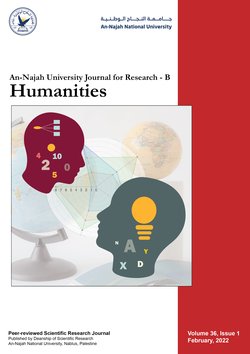Modernity and the Resurrection of the Picture of Dorian Gray
Authors:
Article info
2010-04-27
2011-02-28
2011-02-28
445 - 471
Keywords
Abstract
This paper discusses the so-called incongruity that critics tend to see in Oscar Wilde’s aesthetic theory which he celebrates in his prose. Critics have always discussed a kind of contradiction between Wilde’s novel The Picture of Dorian Gray (1891) and his artistic views which he celebrates in The Preface and in his two essays “The Decay of Lying” (1889) and “The Critic as an Artist” (1891). The first section of this paper analyzes Wilde’s artistic theory which was a reaction against Victorian moral aesthetics. Most Victorian aestheticians believed that the function of art is moral. Not only was art related to man’s ethical needs but it also had a religious mission. On the other hand. Wilde. like some Victorian poets. sensed the attraction of pure art independent of all moral concerns. Wilde’s major works reflect a desire to free art from the moral and social obligations. Writing under the influence of Pater and rejecting the principles of Ruskin at the same time. Wilde became the main proponent of New Aesthetic movement in England in 1890s. The paper presents a detailed study of Wilde’s four claims that constitute the New Aesthetics of his age. In addition. it shows the influence of Wilde on modern thought epitomized by Modernists and the proponents of modern objective theory such as Eliot. J. C. Ransom. Brooks. Burke. Ellis and others. The second section of this paper answers a major question: does The Picture of Dorian Gray expose the defects of aestheticism while The Preface defends its virtues? As the paper reviews most of the issues that critics consider to be a source of contradiction. it also shows that the novel presents a coherent philosophical point of view that Wilde wished to emphasize at least indirectly. The novel. when properly understood. is consistent with Wilde’s artistic views.
Khrais, S. (2011). Modernity and the Resurrection of the Picture of Dorian Gray. An-Najah University Journal for Research - B (Humanities), 25(2), 445–471. https://doi.org/10.35552/0247-025-002-007
[1]S. Khrais, “Modernity and the Resurrection of the Picture of Dorian Gray,” An-Najah University Journal for Research - B (Humanities), vol. 25, no. 2, pp. 445–471, Feb. 2011, doi: 10.35552/0247-025-002-007.
Khrais, Sura. “Modernity and the Resurrection of the Picture of Dorian Gray.” An-Najah University Journal for Research - B (Humanities), vol. 25, no. 2, Feb. 2011, pp. 445–71. Crossref, https://doi.org/10.35552/0247-025-002-007.
1.Khrais S. Modernity and the Resurrection of the Picture of Dorian Gray. An-Najah University Journal for Research - B (Humanities) [Internet]. 2011 Feb;25(2):445–71. Available from: http://dx.doi.org/10.35552/0247-025-002-007
Khrais, Sura. “Modernity and the Resurrection of the Picture of Dorian Gray.” An-Najah University Journal for Research - B (Humanities) 25, no. 2 (February 2011): 445–71. https://doi.org/10.35552/0247-025-002-007.
الحداثة و إحياء رواية دوريان غراي
المؤلفون:
معلومات المقال
2010-04-27
2011-02-28
2011-02-28
445 - 471
الكلمات الإفتتاحية
الملخص
تهتم هذه الدراسة بالتناقض المزعوم الذي يناقشه النقاد عند الحديث عن النظرية الجمالية لأوسكار وايلد والتي تظهر تفاصيلها في شعره وأعماله النثرية. يؤكد بعض النقاد على وجود تناقض واضح بين آراء أوسكار وايلد الداعمة للنظرية الجمالية الحديثة والتي يجسدها في مقاليه الشهيرين "اضمحلال الكذب" (1889) و"الناقد كفنان" (1891)، "والافتتاحية" وتلك الداعمة للنظرية الأخلاقية التقليدية والتي تجسدها رواية صورة دوريان غراي (1891)، كما يرى بعض النقاد. يعالج الفصل الأول من هذه الدراسة النظرية الجمالية الحديثة التي ظهرت كرد فعل للنظرية الأخلاقية التي سادت في العصر الفكتوري والتي تؤكد على أن هدف الفن أخلاقيّ بالدرجة الأولى وديني على وجه الخصوص. وتفيد هذه النظرية الجمالية الحديثة أن الفن بعيد كل البعد عن الأهداف الأخلاقية الاجتماعية المزعومة، فالفن يُقدرُ لخصائصه الجمالية البحتة، ومن ثم أصبح وايلد حامل راية الحركة الجمالية الحديثة في انجلترا في التسعينيات من القرن التاسع عشر. تناقش هذه الدراسة مبادئ أوسكار وايلد الجمالية وعددها أربع، وما تركت من تأثير على الفكر الحديث في القرن العشرين وعلى نقاد محدثين أمثال اليوت، رانسوم، بروكس، بيرك، إليس وغيرهم. أما الجزء الثاني والأخير من هذه الدراسة فيعرُجُ إلى برهنة أن التناقض المزعوم بين رواية وايلد ومقاليه وافتتاحيته لا أساس له. فالرواية تؤكد على ذات المفاهيم الجمالية التي شكلت جوهر النظرية الجمالية الحديثة في القرن العشرين.
Khrais, S. (2011). Modernity and the Resurrection of the Picture of Dorian Gray. An-Najah University Journal for Research - B (Humanities), 25(2), 445–471. https://doi.org/10.35552/0247-025-002-007
[1]S. Khrais, “Modernity and the Resurrection of the Picture of Dorian Gray,” An-Najah University Journal for Research - B (Humanities), vol. 25, no. 2, pp. 445–471, Feb. 2011, doi: 10.35552/0247-025-002-007.
Khrais, Sura. “Modernity and the Resurrection of the Picture of Dorian Gray.” An-Najah University Journal for Research - B (Humanities), vol. 25, no. 2, Feb. 2011, pp. 445–71. Crossref, https://doi.org/10.35552/0247-025-002-007.
1.Khrais S. Modernity and the Resurrection of the Picture of Dorian Gray. An-Najah University Journal for Research - B (Humanities) [Internet]. 2011 Feb;25(2):445–71. Available from: http://dx.doi.org/10.35552/0247-025-002-007
Khrais, Sura. “Modernity and the Resurrection of the Picture of Dorian Gray.” An-Najah University Journal for Research - B (Humanities) 25, no. 2 (February 2011): 445–71. https://doi.org/10.35552/0247-025-002-007.

Since 2019
Cite Score (Scopus): 0.5
Time to First Decision: 7 Days
Submission to Acceptance: 60 Days
Acceptance to Publication: 10 Days
Acceptance Rate: 20%
Call for Papers:
Special Issue on
Innovative Assessment in the Age of AI: Strategies for Quality
Why should you
Publish With Us?
An-Najah National University
Nablus, Palestine
Nablus, Palestine
- P.O. Box
- 7, 707
- Fax
- (970)(9)2345982
- Tel.
- (970)(9)2345560
- (970)(9)2345113/5/6/7-Ext. 2628
- [email protected]
- EIC
- Prof. Waleed Sweileh
An-Najah University Journal for Research - B (Humanities) © 1986 by An-Najah University, Nablus, Palestine is licensed under CC BY-NC 4.0
